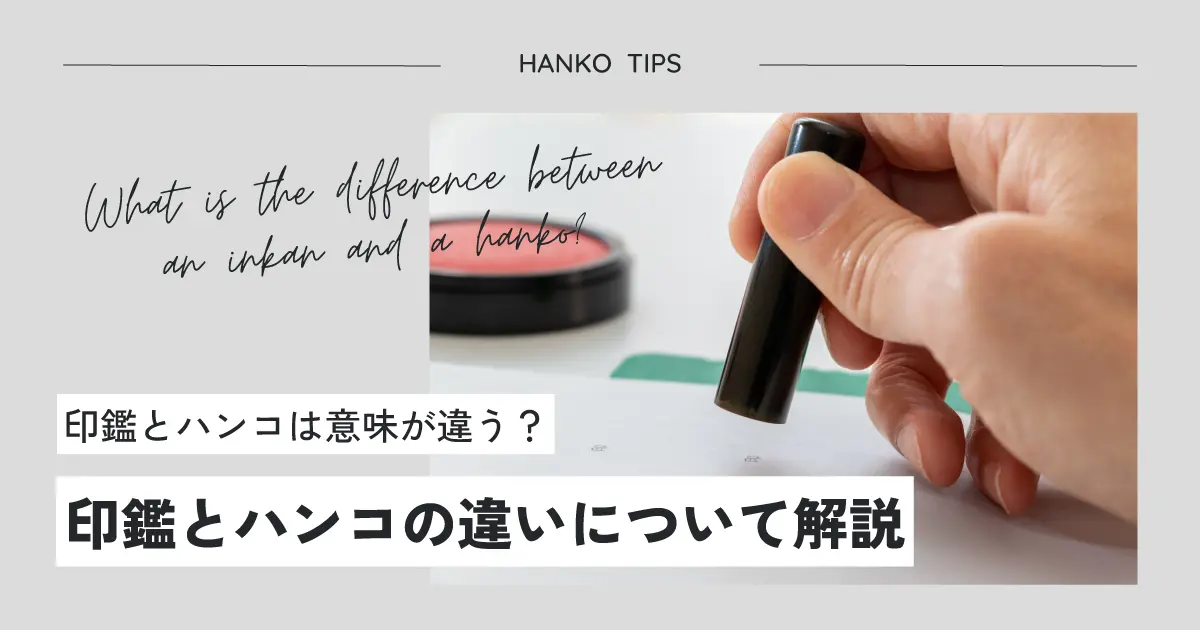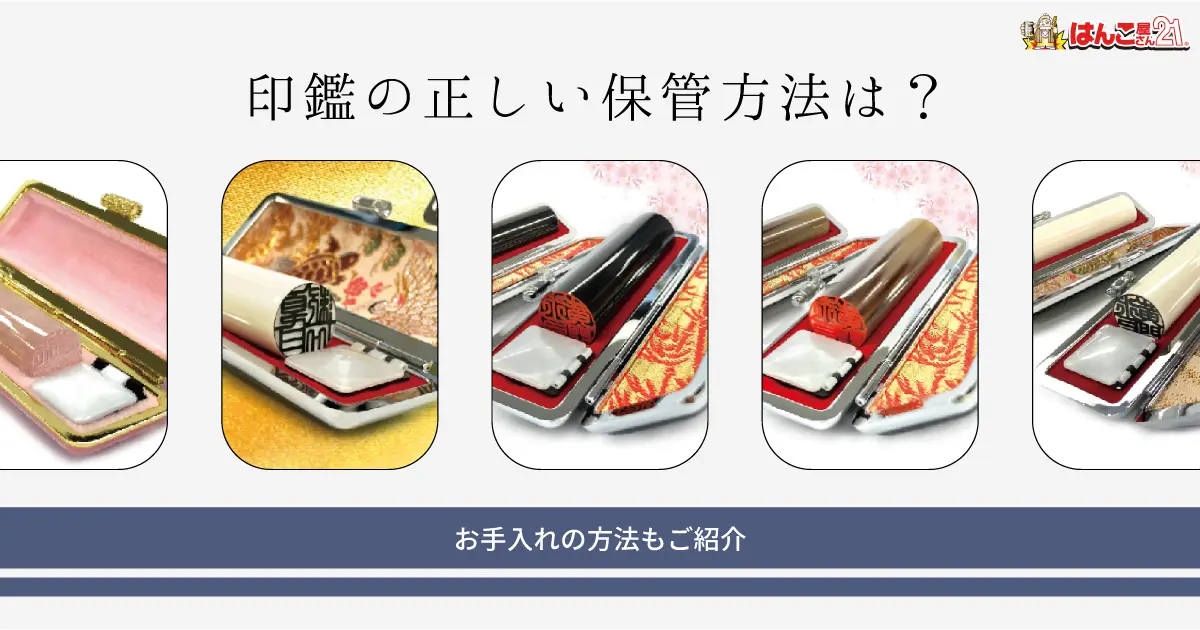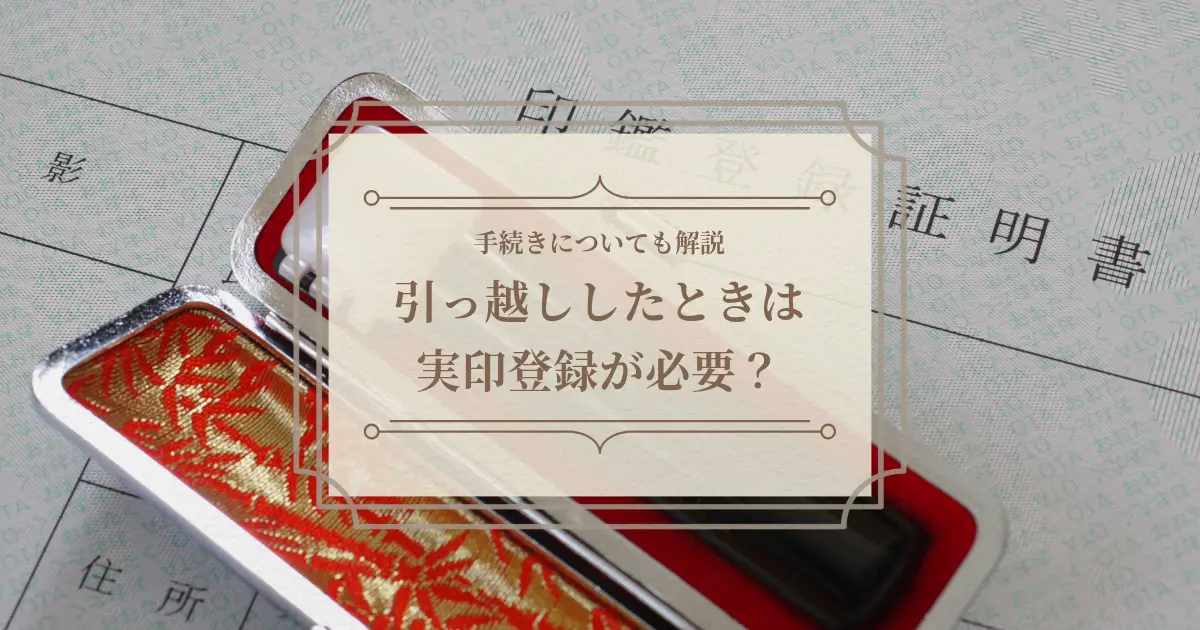Many people probably think that a HANKO and a stamp are similar or that they refer to the same thing.
In fact, HANKO and hanko are words with different meanings and are used differently. In this article, we will explain the difference between HANKO and hanko.
The difference between a HANKO and a hanko
Did you know that there is a clear difference between a HANKO and a stamp? Many people think that a HANKO and a stamp are the same thing, and do not use the words clearly. In order to understand the clear difference, we will explain the difference between a HANKO and a stamp and the history of HANKO.
The difference between a HANKO and a hanko
There is a big difference between a HANKO and a stamp. A "HANKO" refers to the "impression" of a seal, and is something that is registered with government offices and banks. Also, a HANKO can include not only a name but also a picture, and has characteristics that are different from a stamp. A HANKO registered with a government office is called a "jitsuin" (registered seal), and a HANKO registered with a bank is called a "ginkoin" (bank seal).
On the other hand, a hanko refers to the actual object used for stamping, and is the seal that shows that you are a party to the document.
It is used to show identity, so saying "Please HANKO the contract" is not appropriate. In recent years, many people have come to understand that a HANKO and a hanko are the same thing, but in business situations, there is a clear distinction between the two, so it is important to understand the difference.
The origin of the word "HANKO"
Do you know the origin of the word "HANKO" in Japan? Since most countries overseas do not use HANKO, the origin of the Japanese word "HANKO" is interesting. The origin of the word "HANKO" is said to be from "daicho" (mirror), and ledgers were used to determine whether a HANKO was genuine. Later, ledgers came to be recognized as HANKO, and the stamped impression also came to be called "HANKO."
It is said that the HANKO system began to spread during the Nara period. During the Nara period, only official seals were used, and later, in the Heian period, private seals such as those of the Fujiwara family began to be used. The use of HANKO was not permitted among ordinary people, and when stamping a contract, they would show their status by making a dot with their index finger (hidden mark) or by signing their own name.
The origin of the word Hanko
The origin of the word hanko is not clear, but there are several theories. For example, it is from hanko, which was used in the Edo period. It is said that it became hanko because the pronunciation of hanko is similar. Another theory is that it was called hanko, which is an abbreviation of hanko, which means "to press a plate."
There are various theories about the origin of the word, such as the fact that the difference between printing using a printing block and using a seal became unclear, and so seals came to be called hanko. Although the exact origin is unknown, the most likely explanation is that the act of pressing a block became hanko.
History of HANKO
Here we look back on the history of HANKO. The oldest HANKO is said to be a gold seal with the inscription "King of Na in Han," but there is still no clear evidence. It is a famous story that is even included in textbooks, but the truth is that it has not yet been clarified.
Other names for stamps
Other names for hanko include insho and ingyo. Insho are often used to clarify a person's status, and many are also valuable as works of art. Insho is sometimes used in the same sense as hanko.
About HANKO Registration
To prove that you are the person who owns the HANKO, you need to register it as a registered seal. If you want to show that the seal is yours, you should HANKO it.
A registered HANKO is called a "jitsuin" (real seal) and is required for important documents. A HANKO that is not HANKO cannot be identified as the person's HANKO, and may not be able to be used to enter into a contract. If you are buying or selling real estate, receiving life insurance, or taking out a loan, you will need a HANKO registration form and a jitsuin (real seal), so be sure to prepare them in advance.
You can easily register HANKO at your local government office. Just bring proof of identity and the HANKO you want to register, and go through the HANKO registration procedure to have your seal created right away. If you move, you may need to re-register HANKO registration card. If you move to a city or town different from the one you were originally living in, your HANKO registration card will be discarded.
Therefore, if you move, you will need to register HANKO again, so it is advisable to register it at the same time as your change of address. If you move to the same city or town, you can continue to use HANKO registration card, but if you move to a different ward in the same city, you may not be able to use it, so you need to check.
Points to consider when choosing a HANKO and stamp
When choosing a HANKO and stamp, you need to decide which HANKO to use based on the purpose. If you want to use it as a personal seal, you will need to register it, so it is best to make an original HANKO. If you ask a HANKO specialist store, they will easily create one for you, so please create the HANKO you like.
HANKO are made from a variety of materials. The HANKO of red ink and the method of maintenance vary depending on the material, such as wood, ivory, or titanium. HANKO made from wood, buffalo horn, or ivory cannot be washed with water, but titanium HANKO can be washed with water, so it is a good idea to choose one based on ease of care.
Also, HANKO have different sizes. For official seals, the appropriate size is 16.5-18mm for men and 15-16.5mm for women. If the size is not appropriate, the characters may not fit well and may look unnatural. Also, there are set sizes that can be used for official seals, and seals that are too small or too large cannot be HANKO, so please be careful.
When making a HANKO, you should also consider the font (typeface). For example, the Inso-tai style is used for official seals and bank seals, and is difficult to counterfeit. There are no particular specifications, but by choosing a typeface depending on the purpose, you can create a HANKO that suits the situation.
Is it okay to use a seal on the marriage registration?
Some people think that marriage registration can only be done with a HANKO official seal. However, it is okay to use a personal seal to stamp the marriage registration. No government office will require a registered seal, so there is no need to bother to register HANKO.
Some couples purchase the same HANKO when they change their surname. Purchasing a pair of HANKO for the couple and stamping them on the marriage registration will be a good memory. If you are unsure which HANKO to choose for your marriage registration, we recommend a new pair of HANKO for the couple. Also, after the wedding, you will be able to use matching seals when it is time to use your official seal.
Types of Hanko
There are several types of stamps. Since the situations in which they are used vary depending on the type of stamp, it is important to understand what types of stamps there are. We will introduce some types of stamps, so please check them out.
・Regular seal
A HANKO registered with a city, town, or village office is called a jitsuin (registered seal). A jitsuin is used to prove that the HANKO itself belongs to the person, and is often used in transactions involving large amounts of money. Main uses include buying and selling real estate, signing life insurance contracts, buying and selling cars, and receiving inheritances. A HANKO certificate may be required for important transactions, and it is necessary to check as you may not be able to sign a contract even if you use a HANKO that is not registered.
Also, only one official seal can be registered per person. Even if you want to register several HANKO, the city office will refuse, so you should prepare only one HANKO that you like. Also, since you need to be careful about the risk of fraud by a third party, many people create official seals with their full name. When registering a HANKO with your full name, you need to consider the size of the seal, as you cannot register a HANKO that is not the size specified by the city office.
・Bank seal
A bank seal is a seal that is registered with the bank when you open an account. A HANKO is required to open an account, and if you do not have a HANKO, you cannot open an account. In the past, a passbook and a HANKO were often used when withdrawing money, but this use has decreased recently. However, there are still situations in which a passbook and a bank seal are used, and they are often required when conducting transactions at a counter.
When making a bank seal, you need to consider the risk of fraud by a third party, just as you would with a registered seal. In the past, anyone with a bankbook and a bank seal could withdraw money from their bankbook, but nowadays, identity verification is strict, so there is no need to worry about unauthorized withdrawals.
However, because the types of crimes are diversifying, you never know what kind of scam you might fall victim to unless you are constantly aware of it. Therefore, when making a bank seal, it is advisable to create an original one and keep your bankbook and bank seal separate.
・Certified seal
A personal seal is a substitute for a signature and is HANKO to show that you have confirmed something. A personal seal does not need to be HANKO like a personal seal, so it can be used casually. Common situations in which it is used include when receiving parcels or when checking documents at work.
Many people use stamp-type personal seals as personal seals, so if you have a stamp-type one, it is recommended because you can stamp smoothly. Another advantage is that you can use it for a long time because you can refill it even if the ink runs out.
・Shachihata
Shachihata is very convenient because you can stamp easily without using red ink. Many people think that stamp-type seals are called Shachihata, but Shachihata is the name of the company and not the name of the seal itself. This is because Shachihata seals have become popular because they are easy to press and convenient, and more and more people now think that all stamp-type seals are Shachihata.
Shachihata is used when receiving packages or signing off on company documents. It can be used multiple times by refilling the ink or replacing the cartridge. However, because the printing surface of Shachihata is made of rubber, it cannot be registered as a HANKO.
Seals with a rubber seal cannot be HANKO because the seal may become deformed after long-term use. Therefore, it is important to note that Shachihata seals cannot be used as official seals.
Correction stamp
Correction stamps are used to make corrections to documents. If you make a mistake by stamping on an important document, or stamp it in the wrong place, you can use a correction stamp to show who made the correction. However, since it is not clear who made the correction if you simply draw a double line through it, it is generally more common to use a correction stamp to make corrections.
Correction stamps are smaller than other stamps, making them easier to use for making corrections. Correction stamps come in round and oval shapes, so we recommend that you have one that you like.
The difference between a seal and a HANKO
Some people think that a HANKO and a stamp are the same because the words are similar, but technically they are slightly different. Here we will explain the difference between seals.
The difference between a HANKO and a stamp
A seal is used in the same sense as a hanko. Therefore, there is a clear difference between a HANKO and a stamp, and they are used for different purposes. A seal is a mark that indicates the identity of the person involved, and is generally round or oval in shape.
On the other hand, a HANKO contains not only your name but also pictures, so a seal and a HANKO are not the same thing. Some people consider a HANKO and a stamp to be the same thing, but in business, it is best to clearly distinguish between them.
About Seal Day
In Japan, there is a Seal Day, and various events are held in the seal industry every year on October 1. Seal Day was established on October 1, 1873, and is said to have been established by a proclamation from the Dajokan.
The document also states that official documents that are not HANKO will not be accepted, indicating the effectiveness of the official seal. When requesting a seal for important contracts, the official seal became necessary, and the system was subsequently established.
summary
Although HANKO, stamps, and seals are thought to have similar meanings, they each have different meanings and are used differently. Also, even though they are all called stamps, there are many different types and they have different uses. Use this article as a reference to use the correct words.
 日本語
日本語 English
English 简体中文
简体中文 繁體中文
繁體中文 한국어
한국어 ไทย
ไทย Tiếng Việt
Tiếng Việt Indonesia
Indonesia Français
Français Español
Español Português
Português


